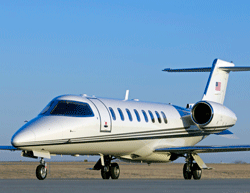Contributed by Randy Dill, RVSM GMU Flight Monitor

The majority of aircraft that fly in RVSM airspace, Flight Level 290 through 410, must meet RVSM minimum monitoring requirements.
In 1988, the International Civil Aviation Organization (ICAO) completed a study that concluded the safe implementation of separation between aircraft at flight levels above 290 from the standard 2,000-ft to 1,000-ft as technically feasible. Reduced Vertical Separation Minimum (RVSM) was subsequently implemented and today the 1,000-ft separation is the global standard.
The United States implemented RVSM in January of 2005 from flight level 290–410 thereby, increasing airspace capacity, and allowing aircraft to fly more optimum profiles and gain fuel savings. As a part of the implementation, aircraft participating in the program were to be monitored to identify aircraft not performing to RVSM standards and identify adverse altitude holding trends in aircraft types.
On November 18, 2010, in conjunction with internationally agreed changes to ICAO Annex 6, operators issued a U.S. RVSM authorization approval will have their height keeping performance monitored every two years or 1,000 hours, whichever is longer from the date of last monitoring.
With this monitoring standard in effect, many aircraft will soon be coming due to for their RVSM monitoring again. Two major monitoring options are available.
AGHME Monitoring
There are seven Aircraft Geometric Height Measurement Element (AGHME) stations located throughout United States and Canada. Operators with aircraft currently outfitted with Mode S transponders are able to overfly these stations for RVSM monitoring at no cost.
The downside to AGHME stations is they are only able to read aircraft with Mode S transponders and will provide no physical evidence of the flight to the operator other than a posting on the FAA website. Currently AGHME coverage is in the southern half of the U.S and the far west is very limited.
GMU Monitoring
The second option for RVSM monitoring is to use the GMU, or GPS-Based Monitoring Unit. There is a fee to this option as it requires a trained technician to ride aboard the aircraft for 30 minutes in RVSM airspace to monitor and record the altitude keeping capabilities with GPS antennas in the side windows. This is the preferred RVSM monitoring option for aircraft with Mode C transponders.
An advantage of the GMU flight monitoring option is that it can be performed anywhere in the U.S. and operators are provided a copy of the results as well as a posting on the FAA website.
To control costs, many operators request a technician ride and monitor the aircraft during a scheduled flight then return via commercial airline. Some operators with Mode S transponders also opt for the GMU monitoring method even though there is a fee, as a better option than flying a long distance to overfly an AGHME station.
It is not unusual for several operators in a specific geographic area to coordinate and schedule GMU flights on multiple aircraft at the same time, utilizing the trained RVSM technician and sharing expenses.
Duncan Aviation RVSM Monitoring
With two GMU monitoring units located in Lincoln, Nebraska, and Ft. Lauderdale, Florida, Duncan Aviation has performed an estimated 700 GMU monitoring flights since the start of RVSM in 2003. The Ft. Lauderdale facility has the capability of traveling outside U.S. airspace to perform GMU flights.
To schedule a GMU RVSM monitoring flight, request a quote or to get more information, contact Duncan Aviation RVSM monitoring experts, Randy Dill and Brian Redondo. We would be glad to provide you a solution for your monitoring requirements.
 |
Randy DillRVSM GMU Flight Monitor Lincoln, Nebraska |
 |
Brian RedondoAvionics Satellite Manager Fort Lauderale, Florida |


